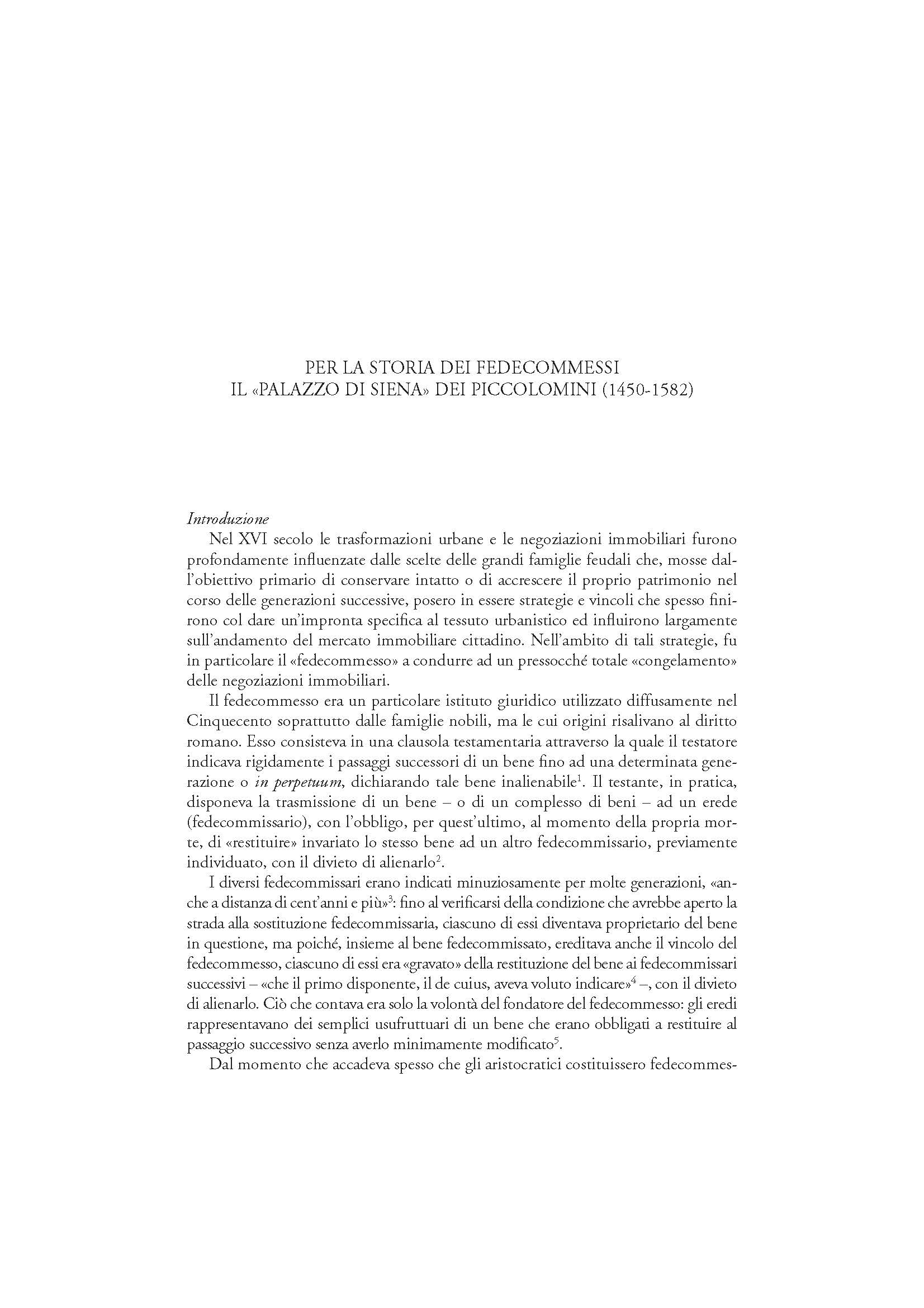Per la storia dei fedecommessi: il «Palazzo di Siena» dei Piccolomini (1450-1582)
6,00 €
«Palazzo di Siena», which the house of Piccolomini had constructed in Rome in 1450, was the object of a «fedecommesso» that enabled its preservation within the noble family for more than a century. The author, using unpublished manuscript documents, reconstructs the history of the palace highlighting the transformations undergone by the trust company over the centuries. Dating back to Roman law, the «fedecommesso» consisted in a clause of will by which the testator stated infl exibly and meticulously the succeeding passages of a property until a given generation or in perpetuity, declaring it inalienable. In the sixteenth century the institute became noble families’ preferred means for maintaining their heritage intact, most especially the family «palazzo», considered the asset which most contributed to the recognition of the social status.
«Palazzo di Siena», which the house of Piccolomini had constructed in Rome in 1450, was the object of a «fedecommesso» that enabled its preservation within the noble family for more than a century. The author, using unpublished manuscript documents, reconstructs the history of the palace highlighting the transformations undergone by the trust company over the centuries. Dating back to Roman law, the «fedecommesso» consisted in a clause of will by which the testator stated infl exibly and meticulously the succeeding passages of a property until a given generation or in perpetuity, declaring it inalienable. In the sixteenth century the institute became noble families’ preferred means for maintaining their heritage intact, most especially the family «palazzo», considered the asset which most contributed to the recognition of the social status.

